Latest Electricity News - Renewable Energy
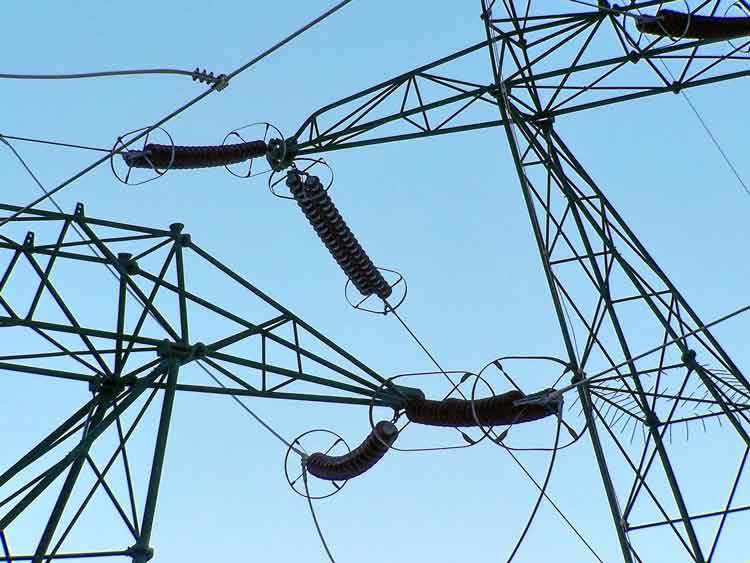
Bright Feeds Powers Berlin Facility with Solar Energy
Bright Feeds Solar Upgrade integrates a 300-kW DC PV system and 625 solar panels at the Berlin, CT plant, supplying one-third of power, cutting carbon emissions, and advancing clean, renewable energy in agriculture.
Key Points
An initiative powering Bright Feeds' Berlin plant with a 300-kW DC PV array, reducing costs and carbon emissions.
✅ 300-kW DC PV with 625 panels by Solect Energy
✅ Supplies ~33% of facility power; lowers operating costs
✅ Offsets 2,100+ tons CO2e; advances clean, sustainable agriculture
Bright Feeds, a New England-based startup, has successfully transitioned its Berlin, Connecticut, animal feed production facility to solar energy. The company installed a 300-kilowatt direct current (DC) solar photovoltaic (PV) system at its 25,000-square-foot plant, mirroring progress seen at projects like the Arvato solar plant in advancing onsite generation. This move aligns with Bright Feeds' commitment to sustainability and reducing its carbon footprint.
Solar Installation Details
The solar system comprises 625 solar panels and was developed and installed by Solect Energy, a Massachusetts-based company, reflecting momentum as projects like Building Energy's launch come online nationwide. Over its lifetime, the system is projected to offset more than 2,100 tons of carbon emissions, contributing significantly to the company's environmental goals. This initiative not only reduces energy expenses but also supports Bright Feeds' mission to promote clean energy solutions in the agricultural sector.
Bright Feeds' Sustainable Operations
At its Berlin facility, Bright Feeds employs advanced artificial intelligence and drying technology to transform surplus food into an all-natural, nutrient-rich alternative to soy and corn in animal feed, complementing emerging agrivoltaics approaches that pair energy with agriculture. The company supplies its innovative feed product to a broad range of customers across the Northeast, including animal feed distributors and dairy farms. By processing food that would otherwise go to waste, the facility diverts tens of thousands of tons of food from the regional waste stream each year. When operating at full capacity, the environmental benefit of the plant’s process is comparable to taking more than 33,000 cars off the road annually.
Industry Impact
Bright Feeds' adoption of solar energy sets a precedent for sustainability in the agricultural sector. The integration of renewable energy sources into production processes not only reduces operational costs but also demonstrates a commitment to environmental stewardship, amid rising European demand for U.S. solar equipment that underscores market momentum. As the demand for sustainable practices grows, and as rural clean energy delivers measurable benefits, other companies in the industry may look to Bright Feeds as a model for integrating clean energy solutions into their operations.
Bright Feeds' initiative to power its Berlin facility with solar energy underscores the company's dedication to sustainability and innovation. By harnessing the power of the sun, Bright Feeds is not only reducing its carbon footprint but also contributing to a cleaner, more sustainable future for the agricultural industry, and when paired with solar batteries can further enhance resilience. This move serves as an example for other companies seeking to align their operations with environmental responsibility and renewable energy adoption, as new milestones like a U.S. clean energy factory signal expanding capacity across the sector.
Related News
Sign Up for Electricity Forum’s News Service
Weekly updates from our FREE News Service—get the latest news, breakthrough technologies, and expert insights, delivered straight to your inbox.
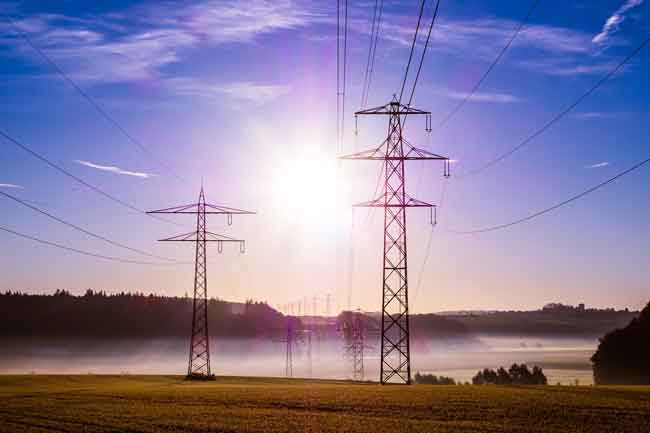
Wind Power Surges in U.S. Electricity Mix
U.S. Wind Power 2025 drives record capacity additions, with FERC data showing robust renewable energy growth, IRA incentives, onshore and offshore projects, utility-scale generation, grid integration, and manufacturing investment boosting clean electricity across key states.
Key Points
Overview of record wind additions, IRA incentives, and grid expansion defining the U.S. clean electricity mix in 2025.
✅ FERC: 30.1% of new U.S. capacity in Jan 2025 from wind
✅ Major projects: Cedar Springs IV, Boswell, Prosperity, Golden Hills
✅ IRA incentives drive onshore, offshore builds and manufacturing
In early 2025, wind power has significantly strengthened its position in the United States' electricity generation portfolio. According to data from the Federal Energy Regulatory Commission (FERC), wind energy accounted for 30.1% of the new electricity capacity added in January 2025, and as the most-used renewable source in the U.S., it also surpassed the previous record set in 2024. This growth is attributed to substantial projects such as the 390.4 MW Cedar Springs Wind IV and the 330.0 MW Boswell Wind Farm in Wyoming, along with the 300.0 MW Prosperity Wind Farm in Illinois and the 201.0 MW Golden Hills Wind Farm Expansion in Oregon.
The expansion of wind energy capacity is part of a broader trend where solar and wind together accounted for over 98% of the new electricity generation capacity added in the U.S. in January 2025. This surge is further supported by the federal government's Inflation Reduction Act (IRA) and broader policy support for renewables, which has bolstered incentives for renewable energy projects, leading to increased investments and the establishment of new manufacturing facilities.
By April 2025, clean electricity sources, including wind and solar, were projected to surpass 51% of total utility-scale electricity generation in the U.S., building on a 25.5% renewable share seen in recent data, marking a significant milestone in the nation's energy transition. This achievement is attributed to a combination of factors: a seasonal drop in electricity demand during the spring shoulder season, increased wind speeds in key areas like Texas, and higher solar production due to longer daylight hours and expanded capacity in states such as California, Arizona, and Nevada, supported by record installations across the solar and storage industry.
Despite a 7% decline in wind power production in early April compared to the same period in 2024—primarily due to weaker wind speeds in regions like Texas—the overall contribution of wind energy remained robust, supported by an 82% clean-energy pipeline that includes wind, solar, and batteries. This resilience underscores the growing reliability of wind power as a cornerstone of the U.S. electricity mix.
Looking ahead, the U.S. Department of Energy projects that wind energy capacity will continue to grow, with expectations of adding between 7.3 GW and 9.9 GW in 2024, and potentially increasing to 14.5 GW to 24.8 GW by 2028. This growth is anticipated to be driven by both onshore and offshore wind projects, with onshore wind representing the majority of new additions, continuing a trajectory since surpassing hydro capacity in 2016 in the U.S.
Early 2025 has witnessed a notable increase in wind power's share of the U.S. electricity generation mix. This trend reflects the nation's ongoing commitment to expanding renewable energy sources, especially after renewables surpassed coal in 2022, supported by favorable policies and technological advancements. As the U.S. continues to invest in and develop wind energy infrastructure, the role of wind power in achieving a cleaner and more sustainable energy future becomes increasingly pivotal.
Related News
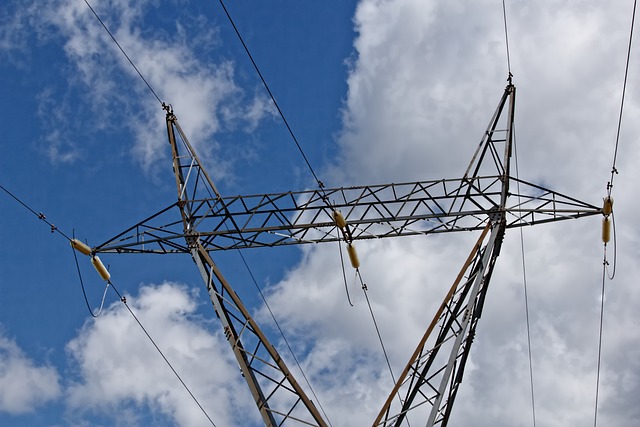
Rising Solar and Wind Curtailments in California
California Renewable Energy Curtailment highlights grid congestion, midday solar peaks, limited battery storage, and market constraints, with WEIM participation and demand response programs proposed to balance supply-demand and reduce wasted solar and wind generation.
Key Points
It is the deliberate reduction of solar and wind output when grid limits or low demand prevent full integration.
✅ Grid congestion restricts transmission capacity
✅ Midday solar peaks exceed demand, causing surplus
✅ Storage, WEIM, and demand response mitigate curtailment
California has long been a leader in renewable energy adoption, achieving a near-100% renewable milestone in recent years, particularly in solar and wind power. However, as the state continues to expand its renewable energy capacity, it faces a growing challenge: the curtailment of excess solar and wind energy. Curtailment refers to the deliberate reduction of power output from renewable sources when the supply exceeds demand or when the grid cannot accommodate the additional electricity.
Increasing Curtailment Trends
Recent data from the U.S. Energy Information Administration (EIA) highlights a concerning upward trend in curtailments in California. In 2024, the state curtailed a total of 3,102 gigawatt-hours (GWh) of electricity generated from solar and wind sources, surpassing the 2023 total of 2,660 GWh. This represents a 32.4% increase from the previous year. Specifically, 2,892 GWh were from solar, and 210 GWh were from wind, marking increases of 31.2% and 51.1%, respectively, compared to the first nine months of 2023.
Causes of Increased Curtailment
Several factors contribute to the rising levels of curtailment:
-
Grid Congestion: California's transmission infrastructure has struggled to keep pace with the rapid growth of renewable energy sources. This congestion limits the ability to transport electricity from generation sites to demand centers, leading to curtailment.
-
Midday Solar Peaks: Amid California's solar boom, solar energy production typically peaks during the midday when electricity demand is lower. This mismatch between supply and demand results in excess energy that cannot be utilized, necessitating curtailment.
-
Limited Energy Storage: While battery storage technologies are advancing, California's current storage capacity is insufficient to absorb and store excess renewable energy for later use. This limitation exacerbates curtailment issues.
-
Regulatory and Market Constraints: Existing market structures and regulatory frameworks may not fully accommodate the rapid influx of renewable energy, leading to inefficiencies and increased curtailment.
Economic and Environmental Implications
Curtailment has significant economic and environmental consequences. For renewable energy producers, curtailed energy represents lost revenue and undermines the economic viability of new projects. Environmentally, curtailment means that clean, renewable energy is wasted, and the grid may rely more heavily on fossil fuels to meet demand, counteracting the benefits of renewable energy adoption.
Mitigation Strategies
To address the rising curtailment levels, California is exploring several strategies aligned with broader decarbonization goals across the U.S.:
-
Grid Modernization: Investing in and upgrading transmission infrastructure to alleviate congestion and improve the integration of renewable energy sources.
-
Energy Storage Expansion: Increasing the deployment of battery storage systems to store excess energy during peak production times and release it during periods of high demand.
-
Market Reforms: Participating in the Western Energy Imbalance Market (WEIM), a real-time energy market that allows for the balancing of supply and demand across a broader region, helping to reduce curtailment.
-
Demand Response Programs: Implementing programs that encourage consumers to adjust their energy usage patterns, such as shifting electricity use to times when renewable energy is abundant.
Looking Ahead
As California continues to expand its renewable energy capacity, addressing curtailment will be crucial to ensuring the effectiveness and sustainability of its energy transition. By investing in grid infrastructure, energy storage, and market reforms, the state can reduce curtailment levels and make better use of its renewable energy resources, while managing challenges like wildfire smoke impacts on solar output. These efforts will not only enhance the economic viability of renewable energy projects but also contribute to California's 100% clean energy targets by maximizing the use of clean energy and reducing reliance on fossil fuels.
While California's renewable energy sector faces challenges related to curtailment, proactive measures and strategic investments can mitigate these issues, as scientists continue to improve solar and wind power through innovation, paving the way for a more sustainable and efficient energy future.
Related News
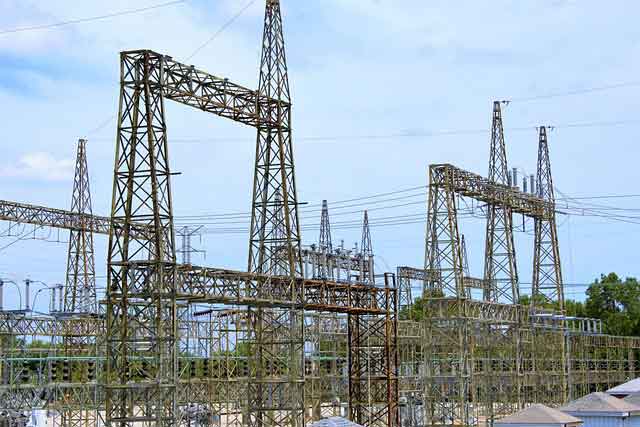
ACCIONA Energía Launches 280 MW Wind Farm in Alberta
Forty Mile Wind Farm delivers 280 MW of renewable wind power in Alberta, with 49 Nordex turbines by ACCIONA Energía, supplying clean electricity to the grid, lowering carbon emissions, and enabling future 120 MW expansion.
Key Points
A 280 MW ACCIONA Energía wind farm in Alberta with 49 Nordex turbines, delivering clean power and cutting carbon.
✅ 280 MW via 49 Nordex N155 turbines on 108 m towers
✅ Supplies clean power to 85,000+ homes, reducing emissions
✅ Phase II could add 120 MW, reaching 400 MW capacity
ACCIONA Energía, a global leader in renewable energy, has successfully launched its Forty Mile Wind Farm in southern Alberta, Canada, amid momentum from a new $200 million wind project announced elsewhere in the province. This 280-megawatt (MW) project, powered by 49 Nordex turbines, is now supplying clean electricity to the provincial grid and stands as one of Canada's ten largest wind farms. It also marks the company's largest wind installation in North America to date.
Strategic Location and Technological Specifications
Situated approximately 50 kilometers southwest of Medicine Hat, the Forty Mile Wind Farm is strategically located in the County of Forty Mile No. 8. Each of the 49 Nordex N155 turbines boasts a 5.7 MW capacity and stands 108 meters tall. The project's design allows for future expansion, with a potential Phase II that could add an additional 120 MW, bringing the total capacity to 400 MW, a scale comparable to Enel's 450 MW U.S. wind farm now in operation.
Economic and Community Impact
The Forty Mile Wind Farm has significantly contributed to the local economy. During its peak construction phase, the project created approximately 250 jobs, with 25 permanent positions anticipated upon full operation. These outcomes align with an Alberta renewable energy surge projected to power thousands of jobs across the province. Additionally, the project has injected new tax revenues into the local economy and provided direct financial support to local non-profit organizations, including the Forty Mile Family & Community Support Services, the Medicine Hat Women’s Shelter Society, and the Root Cellar Food & Wellness Hub.
Environmental Benefits
Once fully operational, the Forty Mile Wind Farm is expected to generate enough clean energy to power more than 85,000 homes, supporting wind power's competitiveness in electricity markets today. This substantial contribution to Alberta's energy mix aligns with ACCIONA Energía's commitment to sustainability and its goal of reducing carbon emissions. The project is part of the company's broader strategy to expand its renewable energy footprint in North America and support the transition to a low-carbon economy.
Future Prospects
Looking ahead, ACCIONA Energía plans to continue its expansion in the renewable energy sector, as peers like TransAlta add 119 MW in the U.S. to their portfolios. The success of the Forty Mile Wind Farm serves as a model for future projects and underscores the company's dedication to delivering sustainable energy solutions, even as Alberta's energy future presents periodic headwinds. With ongoing developments and a focus on innovation, ACCIONA Energía is poised to play a pivotal role in shaping the future of renewable energy in North America.
The Forty Mile Wind Farm exemplifies ACCIONA Energía's commitment to advancing renewable energy, supporting local communities, and contributing to environmental sustainability, and it benefits from evolving demand signals, including a federal green electricity contract initiative in Canada that encourages clean supply. As the project continues to operate and expand, it stands as a testament to the potential of wind energy in Canada's clean energy landscape.
Related News
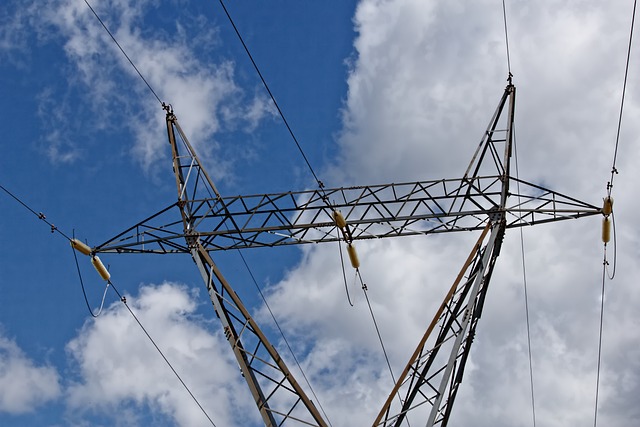
Alberta Leads the Way in Agrivoltaics
Agrivoltaics in Alberta integrates solar energy with agriculture, boosting crop yields and water conservation. The Strathmore Solar project showcases dual land use, sheep grazing for vegetation control, and PPAs that expand renewable energy capacity.
Key Points
A dual-use model where solar arrays and farming co-exist, boosting yields, saving water, and diversifying revenue.
✅ Strathmore Solar: 41 MW on 320 acres with managed sheep grazing
✅ 25-year TELUS PPA secures power and renewable energy credits
✅ Panel shade cuts irrigation needs and protects crops from extremes
Alberta is emerging as a leader in agrivoltaics—the innovative practice of integrating solar energy production with agricultural activities, aligning with the province's red-hot solar growth in recent years. This approach not only generates renewable energy but also enhances crop yields, conserves water, and supports sustainable farming practices. A notable example of this synergy is the Strathmore Solar project, a 41-megawatt solar farm located on 320 acres of leased industrial land owned by the Town of Strathmore. Operational since March 2022, it exemplifies how solar energy and agriculture can coexist and thrive together.
The Strathmore Solar Initiative
Strathmore Solar is a collaborative venture between Capital Power and the Town of Strathmore, with a 25-year power purchase agreement in place with TELUS Corporation for all the energy and renewable energy credits generated by the facility. The project not only contributes significantly to Alberta's renewable energy capacity, as seen with new solar facilities contracted at lower cost across the province, but also serves as a model for agrivoltaic integration. In a unique partnership, 400 to 600 sheep from Whispering Cedars Ranch are brought in to graze the land beneath the solar panels. This arrangement helps manage vegetation, reduce fire hazards, and maintain the facility's upkeep, all while providing shade for the grazing animals. This mutually beneficial setup maximizes land use efficiency and supports local farming operations, illustrating how renewable power developers can strengthen outcomes with integrated designs today.
Benefits of Agrivoltaics in Alberta
The integration of solar panels with agricultural practices offers several advantages for a province that is a powerhouse for both green energy and fossil fuels already across sectors:
-
Enhanced Crop Yields: Studies have shown that crops grown under solar panels can experience increased yields due to reduced water evaporation and protection from extreme weather conditions.
-
Water Conservation: The shade provided by solar panels helps retain soil moisture, leading to a decrease in irrigation needs.
-
Diversified Income Streams: Farmers can generate additional revenue by selling renewable energy produced by the solar panels back to the grid.
-
Sustainable Land Use: Agrivoltaics allows for dual land use, enabling the production of both food and energy without the need for additional land.
These benefits are evident in various agrivoltaic projects across Alberta, where farmers are successfully combining crop cultivation with solar energy production amid a renewable energy surge that is creating thousands of jobs.
Challenges and Considerations
While agrivoltaics presents numerous benefits, there are challenges to consider as Alberta navigates challenges with solar expansion today across Alberta:
-
Initial Investment: The setup costs for agrivoltaic systems can be high, requiring significant capital investment.
-
System Maintenance: Regular maintenance is essential to ensure the efficiency of both the solar panels and the agricultural operations.
-
Climate Adaptability: Not all crops may thrive under the conditions created by solar panels, necessitating careful selection of suitable crops.
Addressing these challenges requires careful planning, research, and collaboration between farmers, researchers, and energy providers.
Future Prospects
The success of projects like Strathmore Solar and other agrivoltaic initiatives in Alberta indicates a promising future for this dual-use approach. As technology advances and research continues, agrivoltaics could play a pivotal role in enhancing food security, promoting sustainable farming practices, and contributing to Alberta's renewable energy goals. Ongoing projects and partnerships aim to refine agrivoltaic systems, making them more efficient and accessible to farmers across the province.
The integration of solar energy production with agriculture in Alberta is not just a trend but a transformative approach to sustainable farming. The Strathmore Solar project serves as a testament to the potential of agrivoltaics, demonstrating how innovation can lead to mutually beneficial outcomes for both the agricultural and energy sectors.
Related News
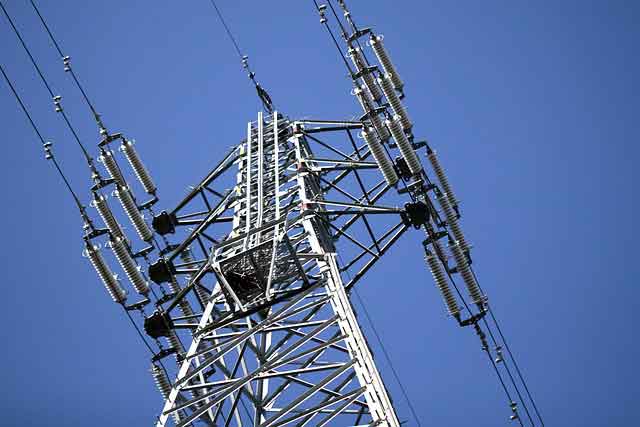
Ottawa Launches Sewage Energy Project at LeBreton Flats
Ottawa Sewage Energy Exchange System uses wastewater heat recovery and efficient heat pumps to deliver renewable district energy, zero carbon heating and cooling, cutting greenhouse gas emissions at LeBreton Flats and scaling urban developments.
Key Points
A district energy system recovering wastewater heat via pumps to deliver zero carbon heating and cooling.
✅ Delivers 9 MW heating and cooling for 2.4M sq ft at LeBreton Flats
✅ Cuts 5,066 tonnes CO2e each year, reducing greenhouse gases
✅ Powers Odenak zero carbon housing via district energy
Ottawa is embarking on a groundbreaking initiative to harness the latent thermal energy within its wastewater system, in tandem with advances in energy storage in Ontario that strengthen grid resilience, marking a significant stride toward sustainable urban development. The Sewage Energy Exchange System (SEES) project, a collaborative effort led by the LeBreton Community Utility Partnership—which includes Envari Holding Inc. (a subsidiary of Hydro Ottawa) and Theia Partners—aims to revolutionize how the city powers its buildings.
Harnessing Wastewater for Sustainable Energy
The SEES will utilize advanced heat pump technology to extract thermal energy from the city's wastewater infrastructure, providing both heating and cooling to buildings within the LeBreton Flats redevelopment. This innovative approach eliminates the need for fossil fuels, aligning with Ottawa's commitment to reducing greenhouse gas emissions and promoting clean energy solutions across the province, including the Hydrogen Innovation Fund that supports new low-carbon pathways.
The system operates by diverting sewage from the municipal collection network into an external well, where it undergoes filtration to remove large solids. The filtered water is then passed through a heat exchanger, transferring thermal energy to the building's heating and cooling systems. After the energy is extracted, the treated water is safely returned to the city's sewer system.
Environmental and Economic Impact
Once fully implemented, the SEES is projected to deliver over 9 megawatts of heating and cooling capacity, servicing approximately 2.4 million square feet of development. This capacity is expected to reduce greenhouse gas emissions by approximately 5,066 tonnes annually—equivalent to the electricity consumption of over 3,300 homes for a year. Such reductions are pivotal in helping Ottawa meet its ambitious goal of achieving a 96% reduction in community-wide greenhouse gas emissions by 2040, as outlined in its Climate Change Master Plan and Energy Evolution strategy, and they align with Ontario's plan to rely on battery storage to meet rising demand across the grid.
Integration with the Odenak Development
The first phase of the SEES will support the Odenak development, a mixed-use project comprising two high-rise residential buildings. This development is poised to be Canada's largest residential zero-carbon project, echoing calls for Northern Ontario grid sustainability from community groups, featuring 601 housing units, with 41% designated as affordable housing. The integration of the SEES will ensure that Odenak operates entirely on renewable energy, setting a benchmark for future urban developments.
Broader Implications and Future Expansion
The SEES project is not just a localized initiative; it represents a scalable model for sustainable urban energy solutions that aligns with green energy investments in British Columbia and other jurisdictions. The LeBreton Community Utility Partnership is in discussions with the National Capital Commission to explore extending the SEES network to additional parcels within the LeBreton Flats redevelopment. Expanding the system could lead to economies of scale, further reducing costs and enhancing the environmental benefits.
Ottawa's venture into wastewater-based energy systems places it at the forefront of a growing trend in North America. Cities like Toronto and Vancouver have initiated similar projects, while related pilots such as the EV-to-grid pilot in Nova Scotia highlight complementary approaches, and European counterparts have long utilized sewage heat recovery systems. Ottawa's adoption of this technology underscores its commitment to innovation and sustainability in urban planning.
The SEES project at LeBreton Flats exemplifies how cities can repurpose existing infrastructure to create sustainable, low-carbon energy solutions. By transforming wastewater into a valuable energy resource, Ottawa is setting a precedent for environmentally responsible urban development. As the city moves forward with this initiative, it not only addresses immediate energy needs but also contributes to a cleaner, more sustainable future for its residents, even as the province accelerates Ontario's energy storage push to maintain reliability.
Related News
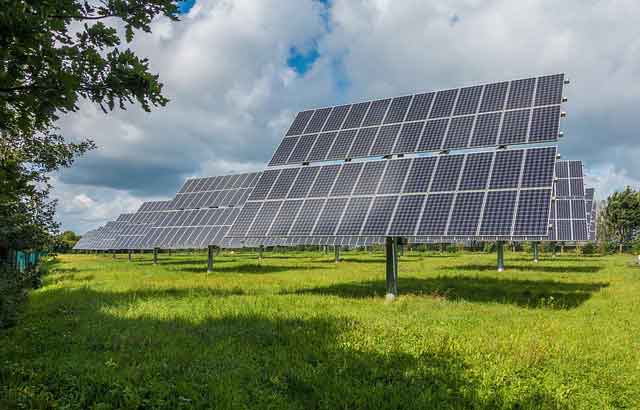
Pacific Northwest's Renewable Energy Goals Hindered
Pacific Northwest Transmission Bottleneck slows clean energy progress as BPA's aging grid constrains renewable interconnections, delaying wind, solar, and data center growth; decarbonization targets depend on transmission upgrades, new substations, and policy reform.
Key Points
An interconnection and capacity shortfall on BPA's aging grid that delays renewables and impedes clean energy goals.
✅ BPA approvals lag: 1 of 469 projects since 2015.
✅ Yakama solar waits for substation upgrades until 2027.
✅ Data centers and decarbonization targets face grid constraints.
Oregon and Washington have set ambitious targets to decarbonize their power sectors, aiming for 100% clean electricity in the coming decades. However, a significant obstacle stands in the way: the region's aging and overburdened transmission grid, underscoring why 100% renewables remain elusive even as momentum builds.
The Grid Bottleneck
The BPA operates a transmission system that is nearly a century old in some areas, and its capacity has not expanded sufficiently to accommodate the influx of renewable energy projects, reflecting stalled grid spending in many parts of the U.S., according to recent analyses. Since 2015, 469 large renewable projects have applied to connect to the BPA's grid; however, only one has been approved—a stark contrast to other regions in the country. This bottleneck has left numerous wind and solar projects in limbo, unable to deliver power to the grid.
One notable example is the Yakama Nation's solar project. Despite receiving a $32 million federal grant under the bipartisan infrastructure law as part of a broader grid overhaul for renewables, the tribe faces significant delays. The BPA estimates that it will take until 2027 to complete the necessary upgrades to the transmission system, including a new substation, before the solar array can be connected. This timeline poses a risk of losing federal funding if the project isn't operational by 2031.
Economic and Environmental Implications
The slow pace of grid expansion has broader implications for the region's economy and environmental goals. Data centers and other energy-intensive industries are increasingly drawn to the Pacific Northwest due to its clean energy potential, while interregional projects like the Wyoming-to-California wind link illustrate how transmission access can unlock supply. However, without adequate infrastructure, these industries may seek alternatives elsewhere. Additionally, the inability to integrate renewable energy efficiently hampers efforts to reduce greenhouse gas emissions and combat climate change.
Policy Challenges and Legislative Efforts
Efforts to address the grid limitations through state-level initiatives have faced challenges, even as a federal rule to boost transmission advances nationally. In 2025, both Oregon and Washington considered legislation to establish state bonding authorities aimed at financing transmission upgrades. However, these bills failed to pass, leaving the BPA as the primary entity responsible for grid expansion. The BPA's unique structure—operating as a self-funded federal agency without direct state oversight—has made it difficult for regional leaders to influence its decision-making processes.
Looking Ahead
The Pacific Northwest's renewable energy aspirations hinge on modernizing its transmission infrastructure, aligning with decarbonization strategies that emphasize grid buildout. While the BPA has proposed several projects to enhance grid capacity, the timeline for completion remains uncertain. Without significant investment and policy reforms, the region risks falling behind in the transition to a clean energy future. Stakeholders across Oregon and Washington must collaborate to advocate for necessary changes and ensure that the grid can support the growing demand for renewable energy.
The Pacific Northwest's commitment to clean energy is commendable, but achieving these goals requires overcoming substantial infrastructure challenges, and neighboring jurisdictions such as British Columbia have pursued B.C. regulatory streamlining to accelerate projects. Addressing the limitations of the BPA's transmission system is critical to unlocking the full potential of renewable energy in the region. Only through concerted efforts at the federal, state, and local levels can Oregon and Washington hope to realize their green energy ambitions.
Related News
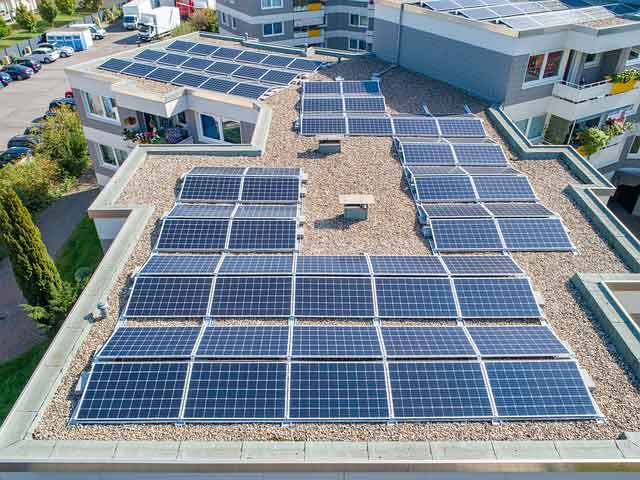
Omnidian Acquires Australia's Solar Service Guys to Expand Global Reach
Omnidian Acquisition of Solar Service Guys accelerates global expansion in renewable energy, enhancing solar maintenance and remote monitoring across Australia and the U.S., boosting performance management, uptime, and ROI for residential and commercial systems.
Key Points
Omnidian acquired Solar Service Guys to expand in Australia, unifying O&M and monitoring to boost solar performance.
✅ Expands Omnidian into Australia's high-adoption solar market.
✅ Integrates largest Aussie solar service network for O&M scaling.
✅ Enhances remote monitoring, uptime, and ROI for PV owners.
In a strategic move aimed at boosting its presence in the global renewable energy market, Seattle-based Omnidian has announced the acquisition of Australia's Solar Service Guys. This acquisition marks a significant step in Omnidian's expansion into Australia, one of the world’s leading solar markets, and is expected to reshape the landscape of solar panel services both in the U.S. renewables market and abroad.
Founded in 2018, Omnidian is a rapidly growing startup that specializes in managing the performance of solar power systems, ensuring they continue to operate efficiently and effectively. The company provides maintenance services for both residential and commercial solar installations, including in Washington where Avista's largest solar array highlights growing scale, and its proprietary software remotely monitors solar systems to identify any performance issues. By quickly addressing these problems, Omnidian helps customers maximize the energy output of their systems, reducing downtime and increasing the return on investment in solar power.
The company’s acquisition of Solar Service Guys, Australia’s largest solar service network, is a clear indication of its ambition to dominate the renewable energy sector globally, amid consolidation trends like TotalEnergies' VSB acquisition across Europe, that signal accelerating scale. The Australian company, which has been operational since 2006, has built a strong reputation for providing high-quality solar panel services across the country. By integrating Solar Service Guys into its operations, Omnidian plans to leverage the Australian company’s deep industry expertise and established network to extend its service offerings into Australia’s solar market.
The acquisition could not come at a better time. Australia, with its vast sun-drenched landscapes, is one of the world’s leaders in solar energy adoption per capita, even as markets like Canada's solar lag persist by comparison. The country has long been at the forefront of renewable energy development, and this acquisition presents a significant opportunity for Omnidian to tap into a booming market where solar power is increasingly seen as a primary energy source.
With the deal now finalized, Solar Service Guys will operate as a fully integrated subsidiary of Omnidian. The merger will not only strengthen Omnidian’s service capabilities but will also enhance its ability to provide comprehensive solutions to solar system owners, ensuring their panels perform at peak efficiency over their lifetime. This is particularly important as solar energy continues to grow in popularity, with more residential and commercial properties opting for solar installations as a means to lower energy costs and reduce their carbon footprints.
The acquisition also underscores the growing importance of solar energy maintenance services. As the adoption of solar panels continues to rise globally, including in Europe where demand for U.S. solar gear is strengthening, the need for ongoing monitoring and maintenance is becoming increasingly vital. Solar energy systems, while relatively low-maintenance, do require periodic checks to ensure they are functioning optimally. Omnidian’s software-based approach to remotely detecting performance issues allows the company to quickly identify and address potential problems before they become costly or result in significant energy loss.
By expanding its reach into Australia, Omnidian can now offer its services to an even broader customer base, positioning itself as a key player in the renewable energy market. The Australian solar market is projected to continue its growth trajectory, with many homeowners and businesses in the country looking to make the switch to solar power in the coming years.
In addition to expanding its geographic footprint, Omnidian’s acquisition of Solar Service Guys aligns with its broader mission to support the global transition to renewable energy. As governments worldwide push for cleaner energy alternatives and new projects like a U.S. clean energy factory accelerate domestic supply chains, companies like Omnidian are playing an essential role in making solar power a more reliable and sustainable option for consumers.
With the backing of Solar Service Guys’ extensive network and experience, Omnidian is poised to deliver even greater value to its customers, as industry transactions like Canadian Solar's plant sale underscore active market realignment. The acquisition will also help the company strengthen its technological capabilities, improve its service offerings, and accelerate its mission to create a more sustainable energy future.
As Omnidian continues to grow, the company’s success will likely serve as a model for other startups in the renewable energy sector. By focusing on performance management, expanding its service offerings, and leveraging cutting-edge technology, Omnidian is well-positioned to lead the way in the next generation of solar energy solutions. The future looks bright for Omnidian, and with this acquisition, it is well on its way to becoming a dominant force in the global solar market.
Omnidian’s acquisition of Solar Service Guys marks a significant milestone in the company’s quest to revolutionize the renewable energy industry. By expanding into Australia and enhancing its service capabilities, Omnidian is not only strengthening its position in the market but also contributing to the global push for cleaner, more sustainable energy solutions. As the world continues to embrace solar power, companies like Omnidian will be essential in ensuring that solar systems operate at peak efficiency, helping customers maximize the benefits of their investment in renewable energy.
Related News
EF Partner Media
Related Articles From ET Magazine
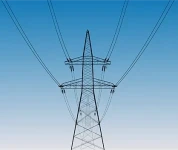
The Role of SCADA in Grid Monitoring and Control
As electric power systems grow in complexity, the need for real-time monitoring and control has never been greater. At the center of this transformation is SCADA—Supervisory Control and Data Acquisition—a system architecture that enables utilities to collect, process, and act on data from remote field devices. From high-voltage substations to distributed energy resources (DERs), SCADA platforms are the nerve center of modern grid operations.
SCADA systems provide utilities with critical operational visibility, allowing for effective grid management, improved reliability, and faster fault detection. As demand increases for automation, decentralized energy integration, and advanced analytics, SCADA’s role continues to expand well beyond its traditional boundaries.
SCADA Architecture: Core Components and Functions
The basic architecture of a SCADA system consists of three primary layers: field devices, communication infrastructure, and the central control system. Together, these layers enable seamless remote monitoring and control of electrical assets across wide geographic areas.
Field Devices: These include Remote Terminal Units
(RTUs) and Programmable Logic Controllers (PLCs) installed at substations, transformers, and switchgear. They interface with physical equipment and sensors to collect real-time data.
Communication Layer: Data is transmitted using telemetry protocols such as DNP3, Modbus, or IEC 60870-5-104 over Ethernet, fiber optics, or radio networks.
SCADA Control Center: A central Human-Machine Interface (HMI) displays data to operators and allows manual or automatic commands to be issued. This interface connects with historian databases, alarm systems, and control logic modules.
SCADA enables grid operators to supervise power flows, manage voltage levels, and respond to equipment failures in near real-time—essential capabilities for ensuring grid stability and minimizing downtime.
SCADA vs DMS vs EMS: Understanding the Differences
While SCADA forms the backbone of real-time operations, it’s often confused with other grid management systems like DMS (Distribution Management System) and EMS (Energy Management System). Each plays a distinct role in utility operations.
SCADA focuses on data acquisition and supervisory control. It provides real-time visibility into field equipment status and telemetry.
DMS builds on SCADA by adding distribution automation, outage management, volt/VAR control, and fault location isolation and service restoration (FLISR) capabilities. It is tailored for the medium- and low-voltage distribution grid.
EMS operates at the transmission level, optimizing power generation, load forecasting, unit commitment, and economic dispatch. EMS integrates market operations and power flow analysis into the control strategy.
In many utilities, these systems are integrated into a unified control platform to provide comprehensive situational awareness and efficient grid operations from generation to distribution.
Integrating DERs into SCADA Systems
As distributed energy resources (DERs)—such as rooftop solar, wind turbines, and battery storage—proliferate, SCADA systems must evolve to manage bi-directional power flows and maintain power quality.
Modern SCADA platforms are increasingly integrated with DER Management Systems (DERMS), enabling operators to:
- Monitor generation from behind-the-meter assets
- Control inverter settings for voltage regulation
- Coordinate dispatch with grid demands
- Ensure grid synchronization and stability
To achieve this, SCADA must support open protocols, real-time communication, and dynamic data modeling to accommodate the variability and intermittency of DERs. This shift is essential for grid modernization and the transition to a decentralized energy ecosystem.
Read the full article at:
https://online.electricity-today.com/electricity-today/q2-2025/

Cybersecurity in Substation and Grid Communications
As power systems become increasingly digitized and connected, the importance of cybersecurity in substation and grid communications has grown exponentially. With the integration of intelligent electronic devices (IEDs), SCADA systems, and remote monitoring, modern substations are now part of a broader cyber-physical infrastructure. While these technologies enable real-time control and improved reliability, they also expose utilities to cyber threats that can disrupt critical services and damage essential assets.
Ensuring the cybersecurity of substation networks is no longer optional—it’s a core requirement for grid stability, national security, and compliance with regulatory standards such as NERC CIP (North American Electric Reliability Corporation Critical Infrastructure Protection).
The Cyber Threat Landscape for Electric Utilities
Substations were once isolated, but the shift to remote access, IoT sensors, and cloud-connected platforms has expanded the attack surface dramatically. Today’s threats include malware, ransomware, insider threats, and state-sponsored attacks targeting the operational technology (OT) layer.
Because substations form the backbone of the transmission and distribution (T&D) network, any cyber incident can lead to blackouts, equipment failures, or cascading effects across the grid. Moreover, attackers often seek to exploit legacy devices, poor segmentation, or insecure remote connections to move laterally within the system.
NERC CIP Compliance: A Baseline for Protection
To address these growing risks, regulatory frameworks like NERC CIP have been developed to enforce a minimum standard of protection for critical infrastructure. NERC CIP governs the cybersecurity of bulk electric system assets across the U.S. and parts of Canada.
NERC CIP requires utilities to:
- Identify and categorize critical cyber assets
- Implement access control and authentication protocols
- Maintain audit trails and perform log analysis
- Conduct vulnerability assessments and incident response planning
Ensure physical and cyber perimeter security
Although NERC CIP provides a strong compliance foundation, it must be supplemented by real-time, adaptive defenses to address evolving threats and zero-day vulnerabilities.
Real-Time Threat Detection and Network Monitoring
Modern substations must go beyond static defenses and implement real-time threat detection capabilities. This includes the deployment of intrusion detection systems (IDS), network security monitoring (NSM) tools, and behavioral analytics platforms tailored for industrial control systems (ICS).
These tools enable operators to:
- Monitor communication patterns between IEDs, RTUs, and SCADA components
- Detect anomalies such as unexpected protocol usage or lateral movement
- Set automated alerts for known attack signatures or abnormal traffic volumes
- Analyze network flows in segmented OT zones
- Enhanced network visibility is critical, particularly when dealing with IEC 61850 protocols and other substation-specific communications that differ from traditional IT systems.
In addition, time-stamped logging, centralized SIEM integration, and forensic capabilities allow security teams to trace and respond to incidents rapidly, minimizing downtime and reducing impact.
Read the full article at:
https://online.electricity-today.com/electricity-today/q2-2025/

Understanding the IEC 61850 Protocol in Substation Automation
https://online.electricity-today.com/electricity-today/q2-2025/

Understanding the IEC 61850 Protocol in Substation Automation
Electricity Today T&D Magazine Subscribe for FREE

- Timely insights from industry experts
- Practical solutions T&D engineers
- Free access to every issue
EF T&D Live Online Forums
Register for our FREE T&D Live Online Forums and join our live expert-led webinars on the latest electrical industry topics.- Industry expert insights on trending technologies
- Free access to recorded webinar presentations
- Downloadable PDF presentations
- Convenient viewing on your schedule—no attendance required








